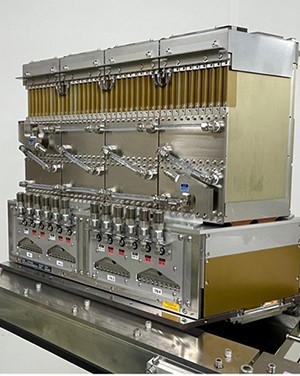Products that contribute to CO2 reduction
Home air conditioner
The Aeolia X series of room air conditioners offer both comfort and energy efficiency throughout the year, as interest in energy conservation continues to grow due to the recent rise in electricity prices. The need for energy conservation in air conditioners is growing due to the recent rise in prices and the rise in electricity prices, while the number of people who leave air conditioners on for long periods of time is increasing due to the intense summer heat. Focusing on the fact that many air conditioners are operated with less power after reaching the set temperature, this product is equipped with a newly developed "Eco Rotary Compressor" (installed in 200 V models except for 9.0 kW class models) with a newly developed compressor structure to achieve a minimum output of 0.3 kW during cooling operation. By lowering the minimum output, it is possible to reduce the frequency of turning on and off when the room temperature is stabilized after reaching the set temperature, thereby maintaining a comfortable room temperature and humidity while reducing power consumption.
.png)
GHP (Gas Heat Pump Air Conditioner)
The GHP (Gas Heat Pump air conditioner) is an air conditioning system that drives the compressor in the outdoor unit with a gas engine and uses a heat pump to perform the heating and cooling.
The "XAIR III" ultra-high efficiency GHP launched in 2020 has a reduced machine size and maintenance space and its installation space was reduced by 17% from that for conventional models. In addition, thanks to technical development such as improvements to the freezing cycle efficiency and blower efficiency, approximately 10% reduction of the annual energy consumption of the GHP have been realized compared with the previous series, which indicates that the GHP has simultaneously realized both smaller size and more energy saving.
These aspects have been evaluated very highly and the GHP has received many awards, including the Energy Conservation Grand Prize 2020 (Director-General of the Agency for Natural Resources and Energy Award).
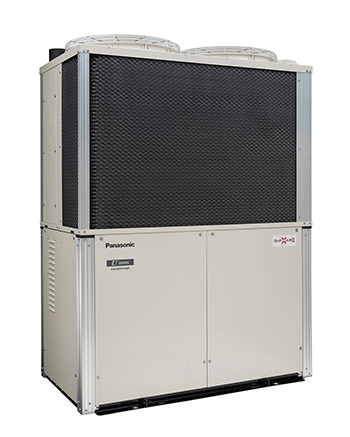
Eco Cute < Natural refrigerant (CO2) heat pump water heater that promotes self-consumption of solar energy >
Panasonic will contribute to the realization of carbon neutrality by promoting self-consumption of renewable energy with the Ohisama Eco Cute.
The Ohisama Eco Cute uses atmospheric heat, solar power, and electricity to boil water. CO2 emissions and the cost of heating and lighting can be reduced.
Today, people seek new lifestyles aimed at energy self-sufficiency. And the environment surrounding us is constantly changing due to global warming and natural disasters.
The Ohisama Eco Cute is environmentally friendly, using energy generated by solar power effectively to produce hot water.
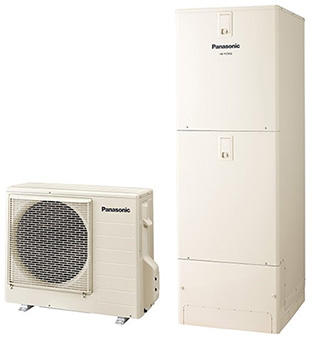
Absorption Chiller "Energy-Saving Natural Chiller, Type PR Genelink"
An absorption chiller is an air conditioning system that uses the heat of vaporization of refrigerant under vacuum, without using a compressor. The chiller uses water as the refrigerant and thermal energy as the operational power source such as the waste heat from factories and the combustion heat of gas. Therefore, the chiller is suitable for air conditioning for large-scale facilities such as domed stadiums, as air conditioning equipment that is environmentally friendly because of low power consumption. The system has large advantages that it is possible to lower the electric power load peak when the cooling load is high, that it uses water as a natural refrigerant, and that the outdoor unit installation space required is smaller than the one required for other air conditioning facilities of a similar capacity.
Compared with conventional products, this chiller reduces the rated cooling water flow rate by 30% and the cooling water pump conveyance power by 65.7%. This reduces the electric power consumed by the cooling water pump, which is a unit that consumes a large amount of power, minimizing it as far as possible. Furthermore, the 23.5% reduction of gas combustion through the utilization of waste heat indicates that energy-saving has been realized. These reduction were favorably evaluated for the product as a whole and it received the Promotion Award of the Heat Pump & Thermal Storage Technology Center of Japan in the 2017 Demand-Side Management Awards.
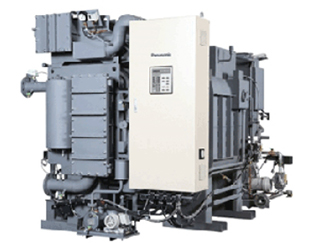
Hot water heating system for Europe
Aquarea Air to Water (A2 W), which is marketed in Europe, is an environmentally friendly next-generation heating system that utilizes renewable energy. It achieves industry-leading energy efficiency and can be integrated with solar power generation systems. Ahead of other companies, Aquarea has a lineup that uses propane (R290), a natural refrigerant, to further reduce environmental impact. The company also received the Good Design Award for outstanding industrial design. The company also develops services that are close to customers' lives, such as remote monitoring using IoT cloud. In 2024, the lineup of high-capacity A2W for apartment buildings was completed our company Aquarea continues to evolve as a product that is friendly to both the environment and people.
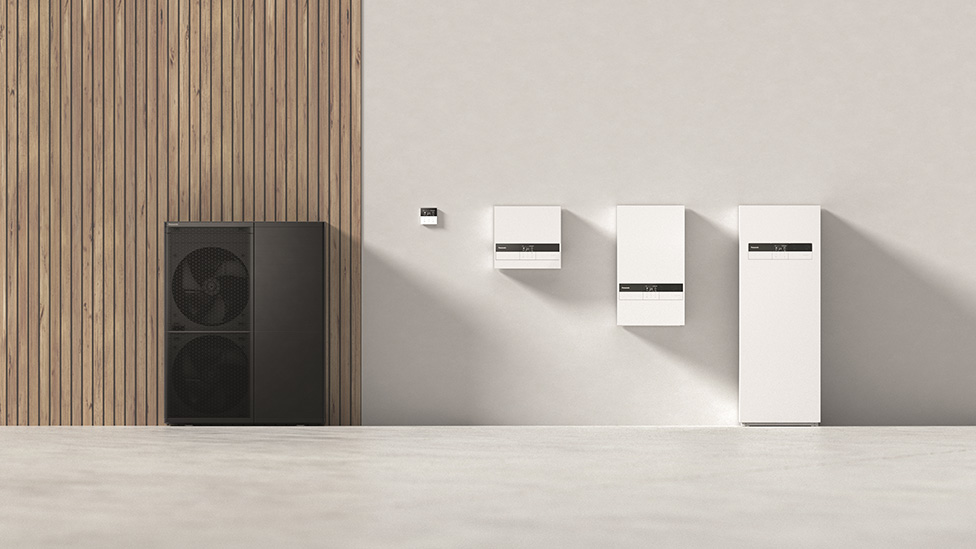
Heat Exchange Ventilation System Equipped with IAQ (Indoor Air Quality) Control
When there is only a small difference between the temperatures indoors and outdoors in spring or autumn, this Heat Exchange Ventilation System suppresses the power consumption by reducing the exhaust air flow rate, while keeping the same supply air flow rate. When the air temperature outdoors is lower than those of indoors and there is an increase in natural ventilation because of draughts and the like in winter, the ventilation system suppresses the power consumption by reducing the amount of ventilation (both the air supply and the exhaust).
The ventilation system efficiently controls switching between the two DC motors for the air supply and exhaust with a constant air flow control function, the heat exchange ventilation, and the normal ventilation, using the temperature sensors and humidity sensors. Accordingly, the optimal air flow and the ventilation method realize both comfort and energy-saving.
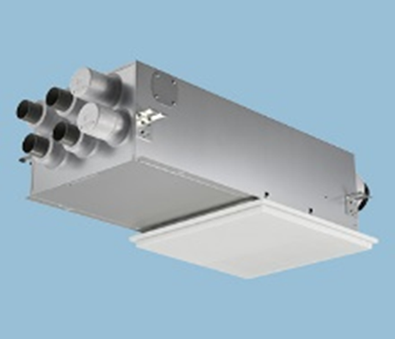
Heat exchange ventilation unit
(Cassette type /DC motor type)
.jpg)
Hybrid GHP, an Individual Air Conditioning System for Maximizing Renewable Energy Use
This product is a hybrid GHP that combines an engine-driven compressor and an electrically driven compressor, and it is a system that can respond to up and down DR. The main functions are the remote control of the previous Smart Multi model.
In addition, it is equipped with a function to switch operation modes by receiving signals from an aggregator via an external circuit board.
The system can respond to power fluctuations easily without compromising air conditioning performance. One of the operation modes is a mode that prioritizes power consumption.
It also enables simple up-demand operation.
It also achieves an industry-leading APF of 2.46 (20 hp) by improving APFp by approximately 16% from the standard GHP by taking the best of both electricity and gas in operation control. In addition, the installation space is equivalent to that of the standard model, and the operation range is expanded when electricity or gas is cut off.

Energy conservation management services
AI learns the external environment and the user's temperature settings to achieve both energy saving and comfort of approximately 20%*1. This service was launched in April 2024 as part of HVAC CLOUD's premium plan, "AI Energy-Saving Control"*2. A one-year trial period is set before the service is offered, and customers are asked to decide whether to introduce the service based on actual energy saving effects.
Since April 2024, this service has been applied to office and store air conditioners.
The industry's first*3 AI operation control achieves both energy saving and comfort, and an approximately 20%*1 reduction in power consumption was confirmed in a field test during the summer season.
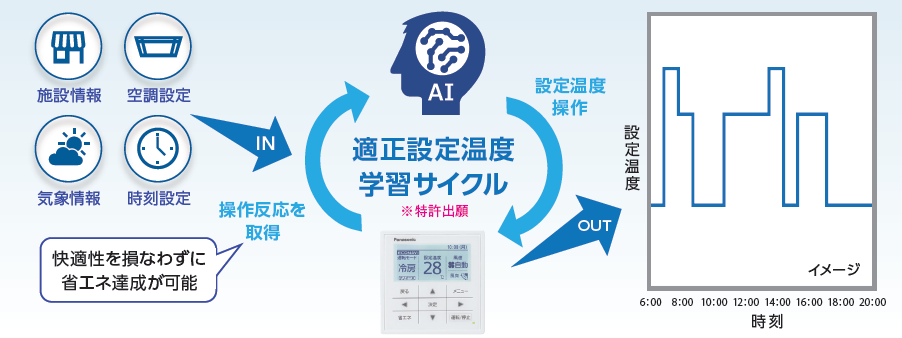
Image of energy conservation management services
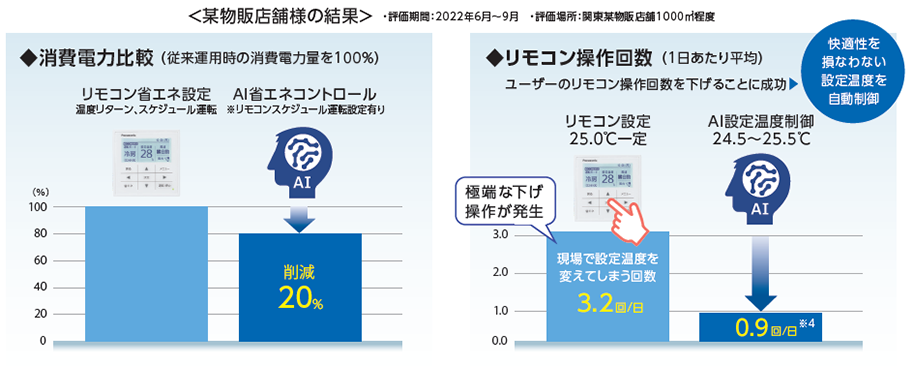
*1 Verified at the facility of a retail store (approximately 1000m2) in the Kanto region between June and September 2022. Comparison with the "set temperature automatic return" function (return to the specified temperature setting within a certain period of time). Actual energy-saving effects vary depending on operating environment and other conditions.
*2 Each service is provided by Panasonic Industrial Equipment Systems Co., Ltd., and requires the conclusion of a fee-for-service agreement with the company for the provision of the service.
*3 Based on our research in the air conditioner industry (as of March 8, 2023).
"Eco Hybrid System" Clothing Dryer and Dehumidifier F-YEX120B
Dehumidification with 2 cooling mechanisms achieves significant energy-saving dehumidification
The "eco-hybrid system" installed in this product is a system in which indoor air is cooled and dehumidified by condensation using a refrigerating cycle cooler, and then heat is exchanged between the cooled air and indoor air from a different route using an air-cooled heat exchanger. An energy-saving dehumidification system is realized that improves dehumidification efficiency by utilizing cold heat, which has not been used before. As a result, power consumption has been reduced by 1/3 compared to conventional models. In addition, this new system was recognized and won the 2024 Energy Conservation Award, the Director-General Award of the Agency for Natural Resources and Energy.
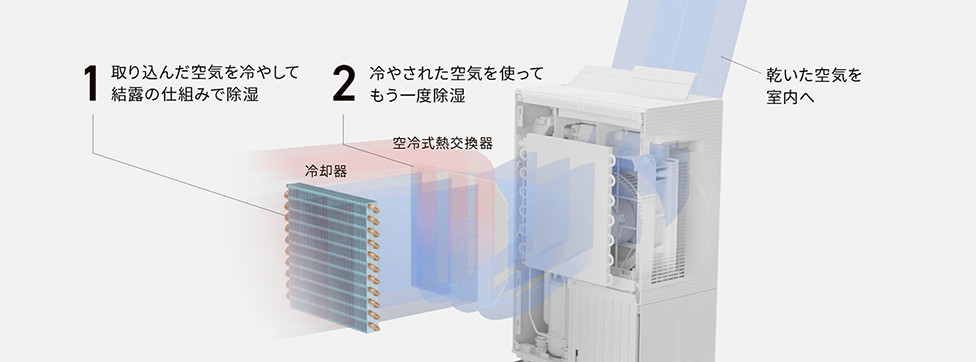
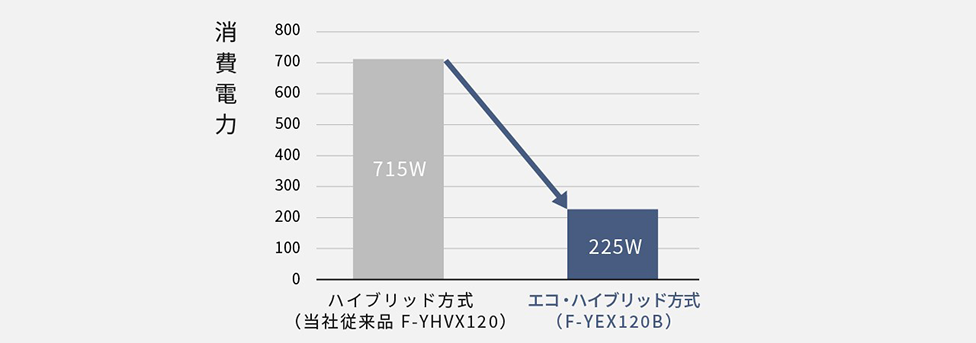
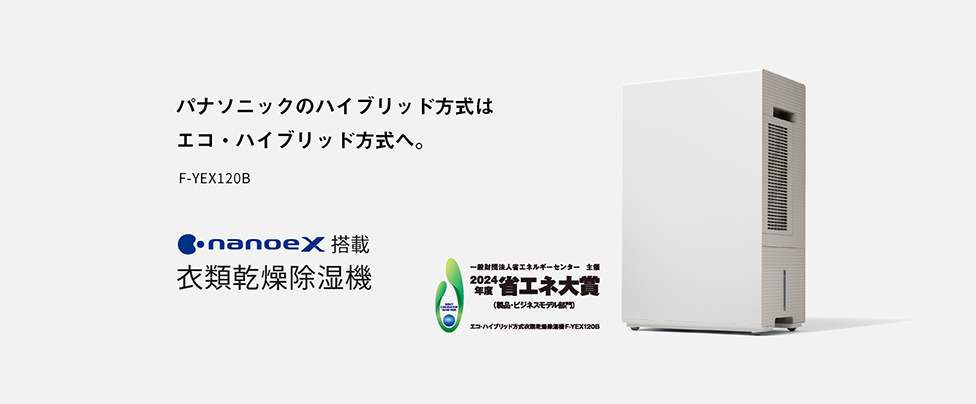
Silky Fine Mist
Silky Fine Mist is a registered trademark of a mist that can be sprayed with a fine mist particle size (approximately 6~10 μm) even with low pressure air (0.25 MPa or less). Factory humidification systems using two-fluid mist nozzles spraying Silky Fine Mist prevent people, buildings, and machinery from getting wet, and provide various effects such as static electricity control in the space through humidification. When used in processes that require humidification in factories, it does not require the heating energy of conventional indirect steam humidifiers or the electric energy of electrode-type steam humidifiers, making it possible to significantly reduce power consumption compared to conventional humidification equipment. In addition, due to its air-saving drive, it has excellent energy conservation, and it contributes to energy conservation in factories by humidifying large-scale spaces with fine mist. The factory humidification system (Control Panel [Part No.: AE-GSCU011], Solenoid Valve Unit (Air) [Part No.: AE-GSVA011], Solenoid Valve Unit (Water) [Part No.: AE-GSVW011], Spray Unit [Part No.: AE-GSUG011]) has been selected as the Ministry of the Environment LD-Tech 2024 certified product.
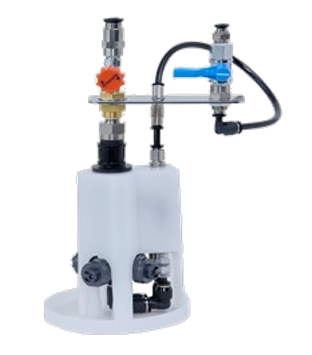
Home Refrigerator WX Type
The main features of the WX type, a successor to the 9X series GX-compatible refrigerators that won the Minister of Economy, Trade and Industry Award, the highest award in the product and business model category of the 2023 Energy Conservation Awards, are (1) AI cooling, which reduces wasteful power consumption by allowing AI to learn how customers use the refrigerators and optimize the defrosting operation of the coolers according to each household's lifestyle; (2) the upper case of the refrigerator is equipped with a special cover. Frost suppression refrigeration, which protects food from freezing and frosting by preventing temperature changes caused by opening and closing the door and releasing unwanted moisture inside the case to prevent frosting; and (3) the blackout prevention mode, in which AI works with weather warnings to keep the inside of the refrigerator cool for a long time even in the event of a power failure and reduce food waste. In addition to achieving the highest level of power consumption (600 L class) under JIS conditions, power consumption during defrosting was reduced by 22% under actual use. Reducing power consumption reduces CO2 emissions, reduces food loss, and contributes to resilience in response to climate change.
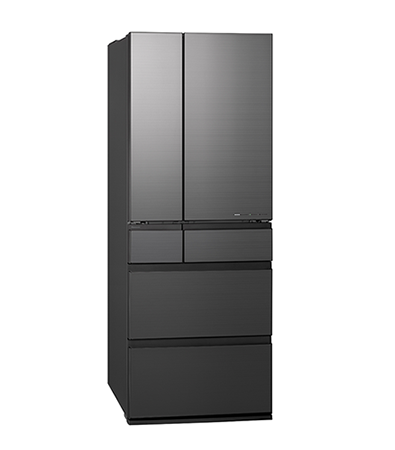
Garbage disposal machine
The Garbage Disposer is effective in reducing the volume and weight of household garbage by approximately 1/5 by drying it with warm air at 130°C. It can contribute to the reduction of CO2 emissions from municipal incineration facilities and incineration ash treatment.
Recently, the number of garbage incineration facilities in Japan has been decreasing due to aging, and there are many local governments that transport collected garbage over long distances to garbage incineration facilities in neighboring municipalities.
Based on our activities to date, our company has launched a subscription service for the Garbage Disposer and contributed to the launch of a subsidy program for the service in cooperation with local governments.
We aim to reduce the amount of garbage, raise the awareness of individual residents about garbage, and work toward the construction of a recycling-oriented society such as a lifestyle that produces as little garbage as possible.
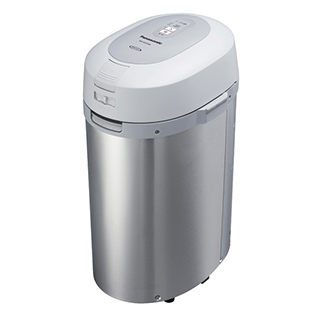
AurBeam ER LED Projector
A floodlight is a lighting fixture installed in sports facilities such as stadiums and multipurpose arenas that can emit strong light in a specific direction.
The AurBeam ER LED floodlight consumes significantly less power than conventional HID floodlights.
It delivers the necessary light to the ground surface, while reducing light leakage to the surrounding area and glare to players.
Thanks to our company's proprietary optical design technology, the number of LED floodlights can be reduced compared to using louvers to prevent light leakage, which greatly contributes to energy conservation while respecting the surrounding environment.
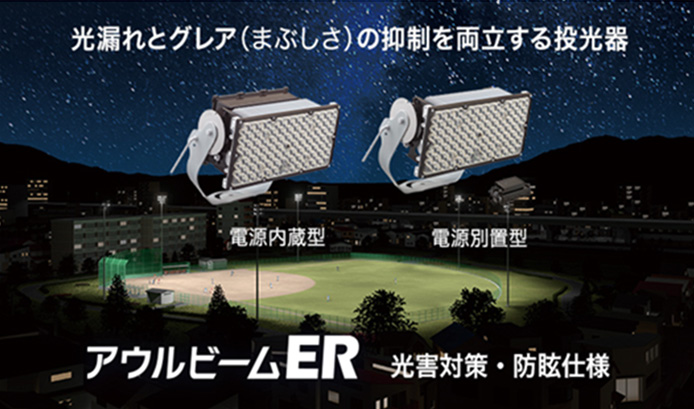
Integrated Staircase Light Wide, Middle, Slim, Corner Type
Changing from a fluorescent lamp without a sensor to an integrated stair lamp can save 77% of electricity annually.
The lamp turns on 100% when it detects a person. When there is no person present, the lamp reduces the brightness to the minimum required to save electricity, or automatically turns on and off when it detects a person's movement. The lamp turns off when there is no person present to save electricity.

The design with particular attention to design creates a unified staircase space.
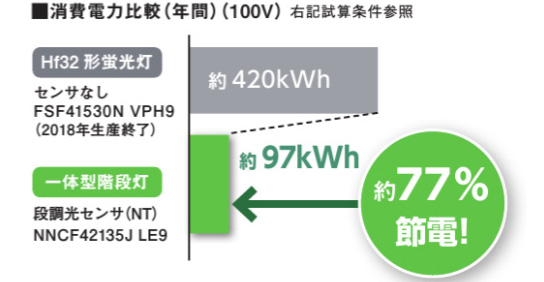
Light Bar for Integrated Base Light iD Series "Environment Specialized Type"
On April 1, 2025, Panasonic Corporation Electric Works launched the "Environmentally Specific Type" light bar for the Integrated Base Light iD Series, which has an industry-leading (*4) intrinsic energy consumption efficiency of 205.9 lm/W (*5), representing brightness (luminous flux) per 1 W of power consumption.
With the government considering mandatory calculation of lifetime CO2 emissions from building to demolition, interest in reducing CO2 emissions is growing in the building industry. At the Niigata Plant, where our company manufactures its mainstay Integrated Base Light iD Series, Panasonic has been implementing environmentally friendly business activities, such as achieving net 0 CO2 emissions (*6) by reducing CO2 emissions and utilizing renewable energy and J-Credit.
The "Environmentally Specific Type" light bar for the Integrated Base Light iD Series is a new product developed with the aim of reducing CO2 emissions during the life cycle of lighting fixtures, from raw material procurement to production and use. By reconsidering cover permeability and internal reflection of fixtures, Panasonic has achieved an industry-leading (*4) intrinsic energy consumption efficiency of 205.9 lm/W (*5). This reduces CO2 emissions during product use, which is the highest amount of CO2 emitted over the entire life cycle of lighting fixtures. In addition, the product is shipped after offsetting the CO2 generated during raw material procurement and production using our company's J-Credit system.
Our company will continue to contribute to comfortable and energy-saving lifestyles through its lighting business.
*4: Combination with direct-attached lighting fixtures Part No. XFX460AUN LA9. As of March 19, 2025 for integrated base lights. our company survey
*5: Light bar is used in combination with lighting fixtures. NEL4600UN LA9 and direct-attached type
Combination with lighting fixtures Part number XFX460AUN LA9
*6: our company's 0 CO2 plant refers to a plant that has reduced CO2 emissions to virtually zero through the use of credits to offset fossil fuel-derived CO2 emissions through the promotion of energy-saving technologies, productivity improvements, etc.
CO2 emissions are reduced to virtually zero through the use of credits to offset CO2 emissions from fossil fuels in combination with the promotion of the use of ghee.

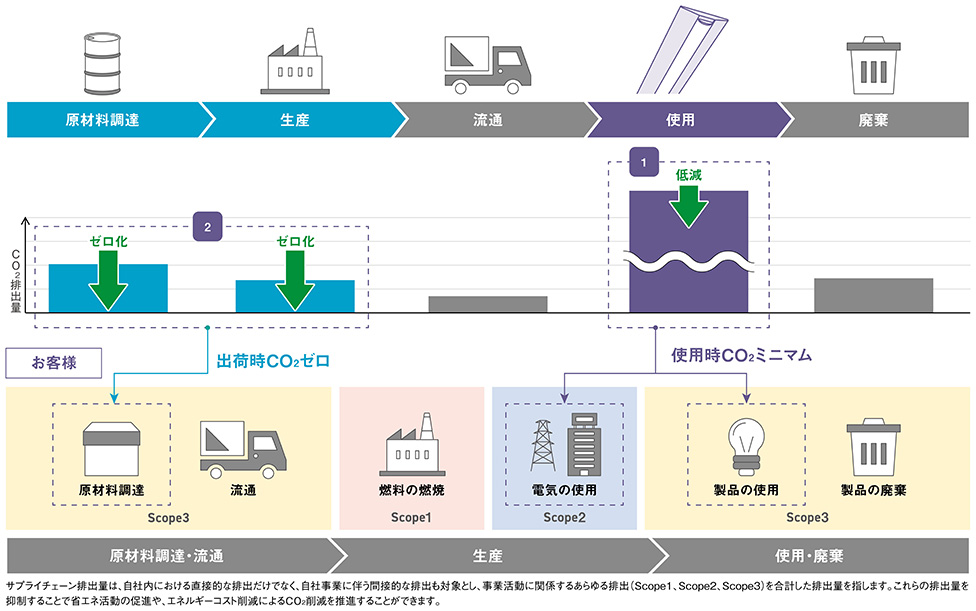
"eneplat," a V2H power storage system for residential use that looks ahead to the electric vehicle era
Instead of selling electricity generated by solar power, there is a growing need for home consumption. The V2H energy storage system "eneplat" is a system that links V2H (Vehicle to Home), which supplies electricity stored in electric vehicle batteries to homes, with storage batteries.
It is the first in the industry*7 to simultaneously charge and discharge electric vehicles*8 and storage batteries. More solar power can be effectively used in homes, reducing the amount of electricity sold and the amount of electricity purchased from solar power systems, and aiming to become self-sufficient in electricity on an hourly basis.
In addition, the system works together with AiSEG3 and eneplat, core energy solutions that link home appliances and home equipment, and contributes to improved self-consumption and CO2 reduction.
*7 Domestic DC-linked V2H storage systems already on sale as of November 25, 2022 (our company survey as of November 25, 2022)
*8 Electric vehicles that can be connected to the system are limited to models approved by our company.
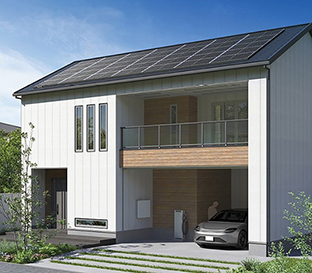
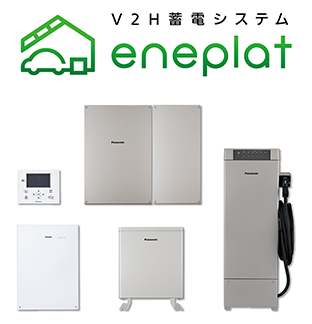
Residential fuel cell unit 'Ene Farm'
'Ene Farm' residential fuel cell unit is a system that provides high efficiency for power generation and energy saving benefits. 'Ene Farm' extracts hydrogen from city gas (natural gas) or LP gas, and then chemically reacts the extracted hydrogen with oxygen in the air to generate electricity. The heat generated by the reaction is stored in a hot water storage tank and can be used at home.
All of 'Ene Farm' units are equipped with the LPWA (Low Power Wide Area) communication function as standard that enables receiving weather information through cloud. In the case that 'Power Outage Risk Prediction' is received, its power generation mode is automatically switched to be prepared for power failure. Even in the event of a power failure at midnight or other times when the 'Ene Farm' has stopped generating electricity, there is no need to restart the 'Ene Farm' with an external power source. Therefore, 'Ene Farm' users can use electricity without worrying even in the event of a power failure.
In addition, for the case that the gas supply is stopped, a new function is equipped to boil water using its electric heater. Moreover, when the water supply is cut off, the hot water in its hot water storage tank can be used as domestic water. Thanks to these features, with one 'Ene farm' unit, it facilitates securing the minimum necessary infrastructure in the event of a disaster, such as 'electricity in the event of a power outage', 'hot water in the event of a gas supply stop', and 'domestic water in the event of a water outage'. Therefore, 'Ene Farm' users can spend time at home without worrying even when they are forced to sheltered at home.
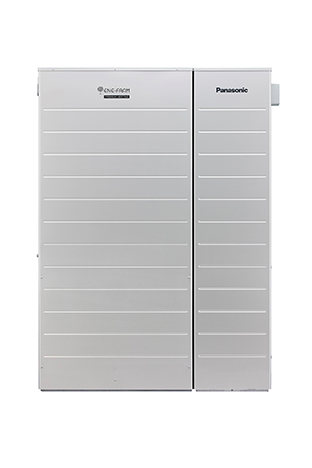
Energy Management Solutions 'Emanage'
'Emanage' is a cloud-type service that provides continuous support for energy-saving activities at facilities, from detection of a problem to operation and improvement of the facility. As for visualization, based on the measurement results of the power consumption by circuit breaker, transition of the measurement results such as gas can be displayed by year, month, week, day (1 hour) , and day (30 minutes) on the monitor. Moreover, based on the measurement results of power consumption by system, details of the power consumption by electric light and power systems can be checked in stacked bar graphs on the monitor. 'Emanage' clarifies when, where, for what, and how much electricity is used, and then, improves operations such as demand control of lighting equipment and air conditioners in response to the detected problem, which contributes to reducing energy consumption of the customer.
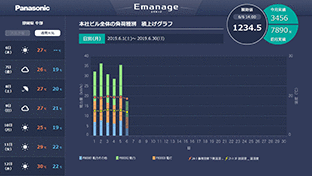
Water fuel cell "H2 KIBOU"
The pure hydrogen fuel cells are based on technologies developed in the home fuel cell EneFarm. For example, by sharing the fuel cell stack, a key device, with EneFarm, we achieved stable power generation performance and 56%*10 power generation efficiency, the highest level in the industry*9. Since this product is targeted for business use, the power generation output has been enhanced to 9.9 kW, more than 14 times the power generation output of the home EneFarm (700 W). Furthermore, by connecting and controlling multiple units, the power generation output can be scaled out according to demand, and by taking advantage of its lightweight and compact chassis size, it can be flexibly adapted to various installation conditions, such as on the roof of buildings or in small areas.
In fiscal 2022, our company HX KUSATSU, a demonstration facility that uses 100% renewable energy*11 for all power consumption in the manufacturing division of the fuel cell plant located at the plant in Kusatsu, Shiga Prefecture, Panasonic, was put into operation using a combination of pure hydrogen fuel cells and solar cells. By visiting this facility, you can feel closer to the CO2 reduction solution using hydrogen.
Panasonic will contribute to the realization of a decarbonized society by proposing a new option to expand the introduction of renewable energy through the full-scale use of hydrogen.
*9 According to Panasonic, as of October 1, 2021, the power generation efficiency of pure hydrogen fuel cells
*10 All efficiency is expressed in terms of LHV (LHV= heat generated after subtracting the latent heat of condensation of water vapor generated when fuel gas is completely burned)
*11 The use of green hydrogen generated by renewable energy, including the use of environmental value certificates, can be addressed. Although hydrogen derived from renewable energy is not used during the demonstration, we aim to use hydrogen derived from renewable energy in the future.
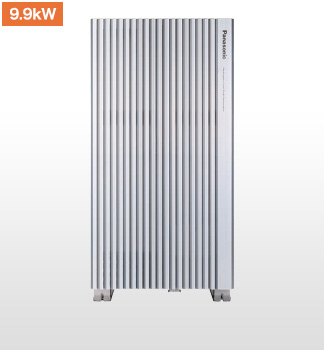
'AiSEG3'
AiSEG3 is a HEMS that not only reduces the cost of living but also supports comfortable living by controlling it in conjunction with various household equipment.
For example, AI Solar Charge Plus predicts the amount of solar power generated based on weather forecasts and the amount of electricity used based on daily lifestyle trends. This helps reduce electricity costs by making smart use of the generated electricity without wasting it. In addition, the number of configurable equipment control scenes in AiSEG2 has been expanded from 8 to 48, making it possible to control equipment from waking up to going to bed more closely. In addition, AiSEG 2 is not only smart but also embraces the philosophy of Archi Design. The simple design blends beautifully into the space.
As for future development, AiSEG 2 aims to respond to the increasing needs of household energy management in recent years by providing AI to analyze lifestyle patterns from aggregated data and optimize energy efficiency in a way that more closely aligns with daily life, without the need for residents to operate it.
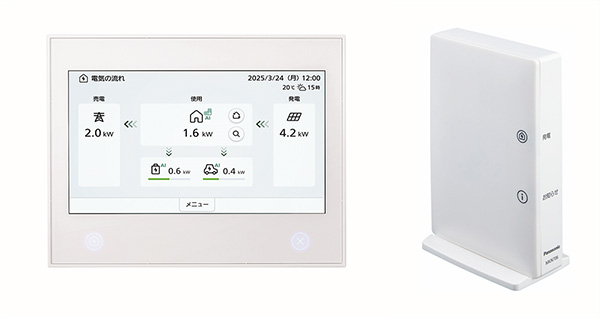
Left: AiSEG3 with 7 inch monitor (MKN7140, MKN7141);
Right: AiSEG3 with gateway (MKN706);
Delivery Communication Box "e-COMBO-LIGHT"
In Japan, approximately 1.5 million courier redeliveries occur every day.
Not only are the same number of delivery cards consumed, but approximately 690 tons of CO2 are also emitted from the truck for redelivery*12.
The delivery communication box e-COMBO LIGHT is an electronic (battery-powered) delivery box that not only reduces the CO2 and delivery cards associated with redelivery by receiving packages when you are not home, but also enables shipping.*13
Available in 7 colors. Available in a variety of installation styles, including fixed installation, installation on functional gateposts, and installation on exterior structures, it can be adapted to a variety of homes, whether new or renovated.
*12 Estimated by our company based on a 2022 the Ministry of Land, Infrastructure, Transport and Tourism survey
*13 For information on how to use the pickup service, please contact your courier company.

Insulation panel dedicated to the earthquake-resistant housing construction method Technostructure 'Techno Atsutaka Panel'
'Techno Atsutaka Panel' is a panel dedicated to the earthquake-resistant housing construction method Technostructure. The insulating materials that are made by injecting foam gas, which is highly insulative, into a structure of microscopic bubbles whose thickness is like the thickness of a hair (less than 100 microns), are used in the panel. Integrating the materials for insulation and frames in the factory has achieved high quality in the insulation construction. In addition, a highly insulated house is built with less man hours than those in the conventional construction.
Technostructure is a highly earthquake-resistant wooden house construction method that enables large spaces and innovative exterior designs that were difficult to achieve with conventional wooden buildings, thanks to its unique wood-iron composite beams (Technobeams) and advanced structural calculations. With this construction method, ZEH*12 can be achieved by using 'Techno Atsutaka panels' on the walls and by insulating the ceiling, floor, and other parts of the house respectively.
*12 ZEH: Net Zero Energy House. Housing that aims to achieve a zero balance in annual primary energy consumption through energy conservation and adoption of use of renewable energy.

Vacuum insulated glass, Glavenir
Applying the development and manufacturing technology of plasma display panels, we manufacture and operate vacuum insulating glass that is approximately 6mm thin and has the industry's highest class*13 insulation performance. In addition to float glass*14 specifications, we have developed tempered glass specifications for the first time in Japan. Taking advantage of the characteristics of a vacuum layer that does not conduct heat, pillars (approximately 0.5mm in diameter) are placed at regular intervals to support a vacuum layer of approximately 0.1mm. Because of the extremely strong pressure applied to the pillars, high-strength materials such as metal are usually used. However, through the development of high-strength insulating materials and the development of high-speed mounting technology, we have realized thin and highly insulating vacuum insulating glass.
Glavenir received the Minister of Economy, Trade and Industry Prize in the 2020 Energy Conservation Grand Prize in recognition of these technological developments. In addition to improving the insulation and comfort of building window glass, the introduction of tempered glass specifications has contributed to significant energy conservation in refrigerated and refrigerated showcases.
We will contribute to the realization of a carbon-neutral society on a global basis by adopting this glass in various industries around the world that require energy conservation.
*13 In the vacuum insulated glass market. As of April 1, 2024, thermal transmittance of vacuum insulated glass with a total thickness of approximately 6 mm was measured to be 0.7 W/(m2・K) by our company.
*14 Glass widely used for window glass, etc.
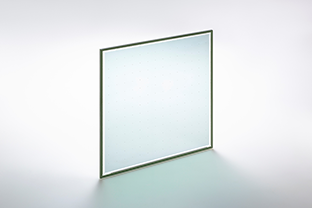
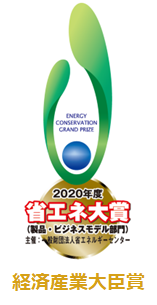
In-Vehicle lithium ion battery
Electric vehicles (EVs) are more energy efficient than internal combustion engine vehicles (ICE) and contribute to the direct reduction of CO2 emissions during driving. Battery-powered electric vehicles (BEVs), in particular, supply the power needed to drive the motor from the battery in the vehicle, and batteries are an important component that plays the core role.
Our company's in-vehicle lithium-ion batteries provide high capacity and power, contributing to the improvement of EV long-distance travel.
We will strengthen our production systems, mainly in Japan and North America, and contribute to the realization of decarbonization by promoting the spread of EVs and further reducing environmental impact.
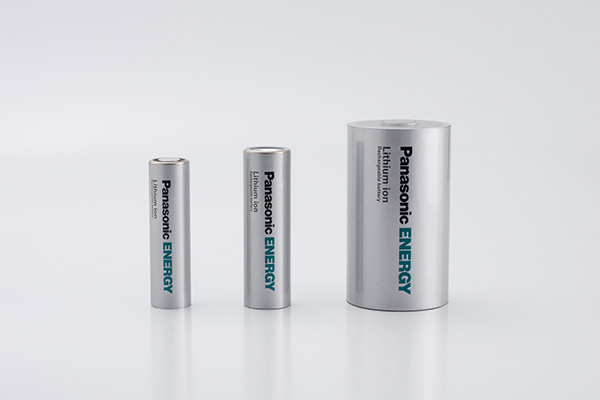
Industrial Inkjet Equipment for Low-Cost, High-Definition Organic EL (OLED) Displays
Organic EL (OLED) displays, in which red, green, and blue (RGB) light-emitting materials are coated on a substrate and an electric current is applied to the substrate to project images, are widely used in society such as televisions, smartphones, and signage.
Traditionally, vacuum deposition has been used to manufacture OLED displays, but the material utilization efficiency is very low, and most of the expensive materials are discarded. Compared to vacuum process equipment, our company's inkjet system can improve the material utilization efficiency with less expensive equipment, and it can be used for large substrates. Furthermore, since printing can be performed without vacuum, it can also save energy when manufacturing OLED displays. In addition, since displays produced by inkjet equipment lose less light through color filters due to RGB spontaneous emission, it has the advantage of higher energy conversion efficiency than displays produced by vacuum deposition, which is used for conventional white OLEDs, and it can also save energy when using OLED displays.
This technology has been highly evaluated from the perspectives of scientific and technological progress and industrial development, and has received numerous awards, including the Ichimura Industry Award for Achievement and the Okochi Memorial Technology Award.
